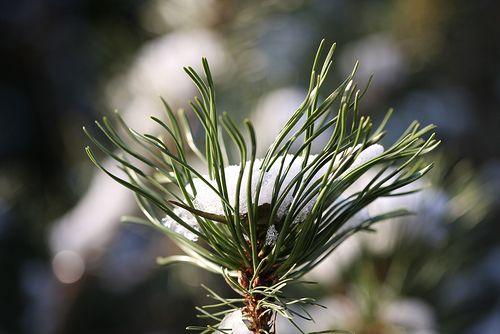Something Wild
- Tags:
- Wildlife

Snow provides a blanket of thermal insulation which protects tender roots, stems, and leaves of low growing plants. Credit Tom Petrus via flickr Creative Commons
Got snow? That's probably a sore subject for many in New England this time of year, but in the woods, snow is not an enemy--a scourge to be shoveled, scraped and plowed out of the way. In nature, snow is a trusted ally to plants and wildlife. Snow acts as a blanket, a source of camouflage, a form of concealment, and even a sponge.

Snow as a Blanket
Snow provides a blanket of thermal insulation which protects tender roots, stems, and leaves of low growing plants such as the shrubs and seedlings who dwell on the forest floor. Northern plants fare best buried entirely by snow rather than exposed to the drying effects of cold air which rob them of precious moisture.
Some plants have an additional line of defense against the cold when snow fails to cover them entirely. When temperatures plummet, the leaves of evergreen shrubs, like rhododendrons, curl up to form tight tubes. This reduces the surface area of the exposed plant where it's exposed above the snow pack.
Snow insulates hibernating mammal dens underground, in fallen logs, or stone walls. Raccoons, skunks and chipmunks sleep to conserve calories during the coldest weeks of mid-winter and when food is scarce.

Snow as Camouflage
Snow provides white camouflage for animals whose winter pelage or fur coat, changes color--such as the 'least weasel' or 'ermine', as well as the snowshoe hare. Both are common in NH forests and this adaptation only works when there is snow.
Snow as Concealment
Snow conceals all animals that tunnel through the snow while remaining active all winter. Weasels and small rodents, including red squirrels, mice, and shrews, inhabit the snow pack itself.
While the benefits are plentiful, deep snow does make travel difficult for large mammals that wallow or establish packed winter trails. Bobcats and coyotes follow deer and moose trails to conserve energy in the winter.
Snow as a Sponge
Lastly, snow stores precipitation like a sponge, preventing run-off over frozen soil. Slowly melting snow in late winter recharges ground water aquifers, re-fills vernal pools used by amphibian and releases stored precipitation to awakening plants.
